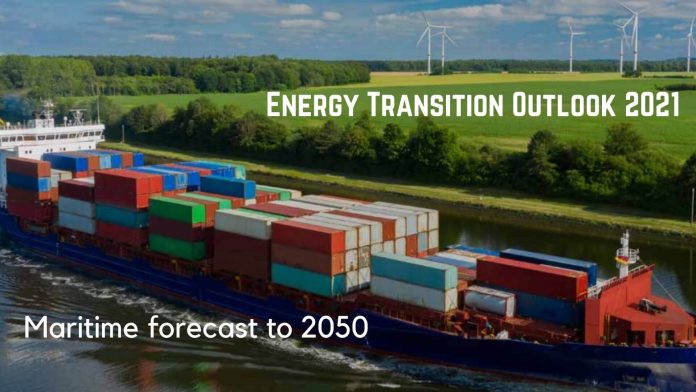
(www.MaritimeCyprus.com) This publication is one out of DNV’s suite of Energy Transition Outlook (ETO) reports. This latest publication examines how the increasing pressure to decarbonize shipping, and the resulting shifts in how they are powered, may affect shipowners contracting new tonnage – with focus on practical solutions and fuel strategies to tackle the shift from conventional to zero/ carbon-neutral fuels.
The maritime industry will go through a period of rapid energy and technology transition that will have a more significant impact on costs, asset values, and earning capacity than many earlier transitions. Shipowners are already experiencing increasing pressure to reduce the greenhouse gas footprint of maritime transport.
This report provides an updated outlook on the regulatory and commercial drivers for decarbonization of shipping:
- Three fundamental key drivers will push decarbonization in shipping in the coming decade: regulations and policies, access to investors and capital, and cargo owner and consumer expectations.
- The Initial IMO GHG Strategy currently drives policy development within international shipping, and the first wave of regulations will take effect from 1 January 2023 (i.e. EEXI, CII). We expect them to have a significant impact on design and operations of all ships.
- While all ships need to fulfil the minimum compliance requirements from the IMO, commercial pressure may push shipowners to aim for a leading position in decarbonization, as we expect that poorly performing shipping companies will be less attractive on the charter market, and may also struggle to gain access to capital.
Further, this report provides an outlook on ship technologies and fuels that could help shipping respond to the decarbonization drive, introducing an updated timeline for the technical availability of selected alternative fuel technologies. We find that:
- The energy and technology transition in shipping has started, with nearly an eighth (12%) of current newbuilds ordered with alternative fuel systems. This is an increase from the 6% reported in the 2019 edition of DNV’s Maritime Forecast to 2050. Except for the
electrification underway in the ferry segment, the alternative fuels are currently still mainly fossil-based, and are dominated by LNG. - There will be demonstration projects for onboard use of hydrogen and ammonia by 2025, paving the way for zero-carbon ships, and these technologies will according to our estimates be ready for commercial use in four to eight years. Methanol technologies are
more mature and have already seen first commercial use. Fuel cells are far less mature than internal combustion engines, for all fuels. - Safety is a prerequisite for the successful and timely introduction of the new fuels such as hydrogen and ammonia. Development of efficient safety regulations and guidelines is fundamental to evolve from largescale demonstration to commercial use.
- A range of new technologies are emerging, including fuel cells, CCS, and wind power.
With the outlook on regulations, drivers, and technologies in mind, this report further presents an updated carbon risk-management framework. Our intention is to help shipowners navigate the technologies and fuels and respond to the drive for decarbonization by developing a 'decarbonization stairway' reflecting the shipowner’s
particular circumstances.
Our framework consists of two main parts: an assessment of the economic potential of fuel and energy-efficiency strategies over the lifetime of a ship; and a structured review of the impact of the chosen fuel strategy on the ship design. Importantly, this updated framework is specifically designed to allow detailed assessments of fuel flexibility and Fuel Ready solutions. Considering the large uncertainties involved over the lifetime of ships, planning for fuel flexibility and Fuel Ready solutions could ease the transition and minimize the risk of investing in stranded assets.
For further details, click below to download full report:
Source: DNV















